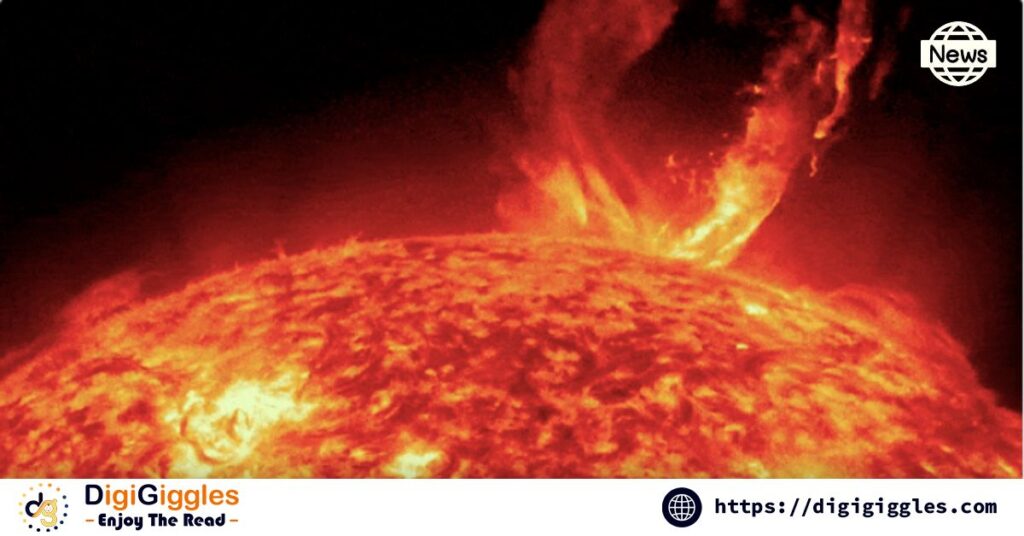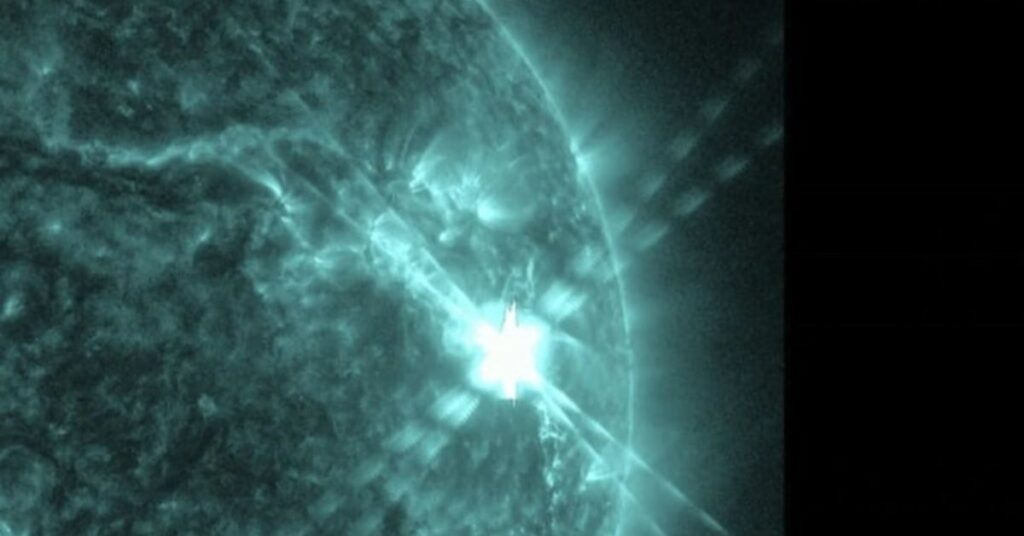
The sun has recently unleashed its might, marking the most potent solar activity since 2017. A colossal X2.8 flare from sunspot AR3514, one of the largest solar radio events recorded, has initiated R3 (Strong) radio blackouts, prompting concerns of potential G2 to G3-class geomagnetic storms. As Earth prepares for this celestial convergence, scientists and space agencies are closely monitoring the situation. The impending space weather drama originates from sunspot AR3514, which has exhibited remarkable activity, emitting flares consistently since December 13th. The most significant of these flares, the X2.8-class eruption on December 14th, carries enough energy to trigger a geomagnetic storm. NOAA analysts are on alert, anticipating G2-class (Moderate) storms that could intensify to G3-class (Strong).
If realized, this could result in captivating auroras visible at mid-latitudes, offering a breathtaking natural spectacle. Geomagnetic storms, although visually stunning with auroras, pose potential threats. They can disrupt navigation systems, including the Global Navigation Satellite System (GNSS), induce harmful currents in power grids, and impact pipelines. As these solar phenomena are expected to persist until December 17th, authorities worldwide are taking precautions to minimize disruptions to electrical and communication infrastructures. Simultaneously, NASA’s Solar Dynamics Observatory captured the largest solar flare in years. This solar outburst, accompanied by a massive radio burst, temporarily interrupted radio communication on Earth for two hours.
NASA telescope has captured the biggest solar flare in 6 years. (Photo: NASA via AP)

This event, the most substantial since 2017, affected even higher frequencies. The combination resulted in one of the most extensive solar radio events ever recorded. Pilots reported communication disruptions, felt across the United States and sunlit regions globally. Scientists are vigilant, monitoring the sunspot region for potential coronal mass ejections (CMEs), anticipating the possibility of geomagnetic storms. Such storms could disrupt high-frequency radio signals, impacting communication at higher latitudes and triggering mesmerizing auroras in the days ahead.
The eruption occurred in the far northwest section of the sun, and NASA’s Solar Dynamics Observatory captured the powerful surge of energy. Launched in 2010, this observatory constantly monitors the sun from an extremely high orbit around Earth. As we stand on the brink of this celestial spectacle, residents in aurora-visible regions are encouraged to gaze at the skies, while authorities worldwide remain vigilant to mitigate potential disruptions. The sun, nearing the peak of its solar cycle, continues to surprise us with its awe-inspiring displays, reminding us of the dynamic forces shaping our solar system.